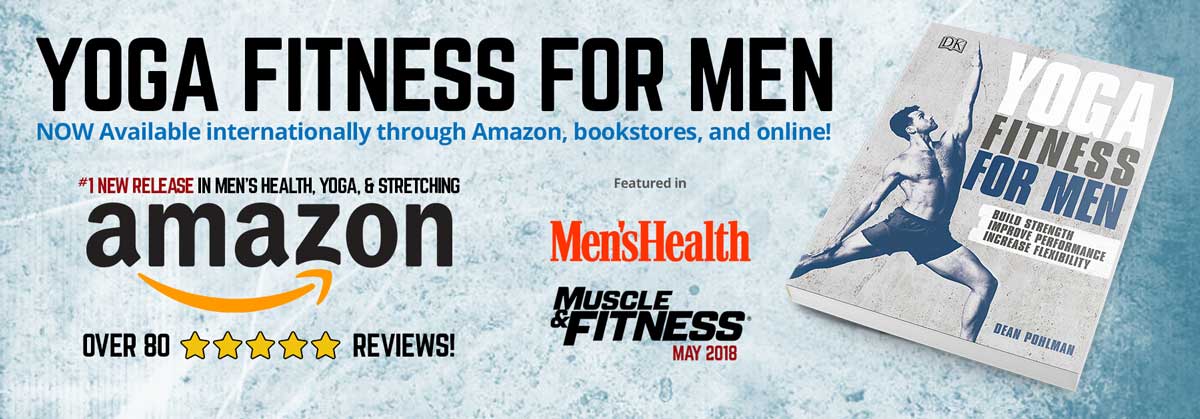This position stretches your inner thighs, relieves tension in your back, and helps prevent knee injuries. It’s an essential cool-down posture for athletes because it promotes speedy recovery and improves lateral mobility. Wide-legged forward fold is also ideal for any person fighting chronic lower-back pain.
Target Area: Inner Thighs, Hamstrings, Ankles
Difficulty: Beginner
Benefits:
- Prevents soft-tissue injury in thighs and hips
- Speeds inner-thigh and hamstring recovery
- Strengthens knees
- Relieves lower-back tension
Considerations – who should be careful?
- People with lower-back pain. This stretch can aggravate lower-back pain, especially if you round your back and don’t use your core.
- People with vertigo or low blood pressure. Keep your head above your hips, and use a block or whatever tool necessary to do so.
- Any lower-body injury. Don’t aggravate the injury further. Do exercises for your upper-body or lay on your back and do non-weight bearing exercises instead.
Technique Walkthrough
- Stand with your feet 4 to 6ft (1.25–1.75m) apart, and slightly turn your toes inward. Engage the arches of your feet, and press into outer edges of feet.
- Engage your quadriceps and squeeze your inner thighs toward each other.
- Hinge at the hips and pull your chest forward and down, maintaining a flat back.
- Rest your fingers on the floor below your shoulders.
- Squeeze hip flexors and core toward each other, and fold forward as far as you can while keeping the back flat.
- Hold the posture, inhaling as you pull your chest forward and lengthen the body, and exhaling as you fold deeper.
Pro Tip: Add a chest stretch by interlacing your fingers behind your back and lifting arms away from your back, as in Humble warrior. You could also hold either end of a strap, rather than interlacing your fingers.
What you should (and shouldn’t) be feeling.
What should you be feeling?
- Stretch in inner thighs,hamstrings, and outer ankles
- Release in back
- Engagement of hip flexors, thighs, and core
What you shouldn’t feel.
- Significantly rounded back; if so, pull chest forward and don’t fold as deep
- Hips relaxing backward; if so, bring them slightly forward
Common Errors & How to Avoid.
- Rounding through your spine; bend your knees, and focus on keeping length through the front of your torso.
- Not keeping your core active; make sure you are engaging your abs and squeezing your quadriceps and hip flexors.
- Not pressing into the outer edges of your feet; make sure you are doing this so you get the ankle mobility benefits.
- Not squeezing your legs toward one another; focus on active mobility, make sure you are squeezing your legs toward one another, engaging your inner thighs (adductors) for the duration of this posture.
- Hips “falling” excessively backward, not squared between your feet. Bring your hips forward and use your core strength to prevent them from falling back.
FAQs
- What if my hands can’t touch the ground?
Then it means your hamstrings and adductors are tight, or your feet are too far apart. It most likely isn’t the latter reason, so just bend your knees and focus on the stretch in your hips and thighs. The depth of the pose isn’t important; it’s how you feel it. - What if my legs aren’t straight?
Then it means your hips are tight. It’s fine if your legs don’t touch the ground, it just means that your hips are tight. Don’t worry so much about your hands touching the ground, and instead focus on keeping your spine straight while you get a nice stretch in your inner thighs and hamstrings. - What if I feel straining in my lower back?
It means you aren’t engaging your core. Don’t round your spine as much, focus on keeping length in the front of your torso, and make sure you’re squeezing your abs. Otherwise you may end up with lower-back pain.
Want to see more info like this? These photos and sections are taken from Yoga Fitness for Men, published in May 2018 by DK Publishers, and written by Dean Pohlman (that’s me), the founder of Man Flow Yoga.

